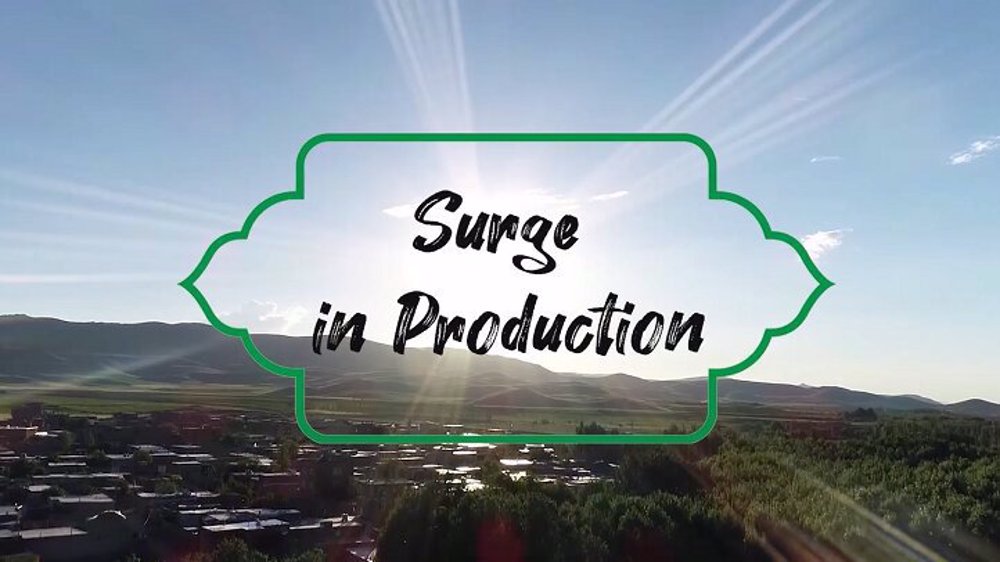Winds of change blow through Iran farming
Iran is expanding dryland farming as a lingering drought is forcing the country to use its resources more prudently and cast off deep-seated wasteful ways.
Most of the aquifers which carried water from under mountains into plains for hundreds of years have hit rock bottom, leaving vast expanses of farmland and orchards bone dry.
The situation has never been so grave, where many overflowing rivers have turned into a dribble, forcing many Iranians to realize that their water resources are not endless as they long assumed.
A late-night soap opera, a hit with many Iranian families, on Saturday dedicated its prime time to tongue-in-cheek subplots about the predicament, with one player boasting how her affluent father had bought her a deep water well in Tehran, leaving the audience in stitches.
However, the situation is far from being a funny story.
A study published in the journal Nature Climate Change in October said the Persian Gulf, which lies between Iran, Iraq, Kuwait, Saudi Arabia, Qatar, Bahrain, United Arab Emirates and Oman, could be too hot to survive by the end of century if carbon dioxide emissions continue at their current pace.

Officials have risen to the occasion in a bid to ameliorate the potential impact that climate change could eventually have on the livelihood of Iranians and to ensure food security for the country’s growing population.
On Saturday, Iran’s Ministry of Agriculture signed an agreement with the International Center for Agriculture Research in the Dry Areas (ICARDA) to expand dryland farming in the country.
The agreement calls for establishing 2 million hectares of rain-fed farms and boosting their yield 25 percent over a period of five years, Minister of Agriculture Mahmoud Hojjati was quoted as saying.

The minister said most of Iran’s drylands are located in arid and semiarid areas where new farming methods are hoped to enable crops better handle low moisture conditions.
New cropping methods are also expected to perpetuate Iran’s self-sufficiency in wheat which is a strategic commodity, he said.
Iran is expecting a surplus of wheat this year, which it plans to release onto the regional markets. According to officials, state-sponsored purchases of wheat from domestic farmers have already hit 11 million tonnes, a rise of 30% on the year before.
The country’s wheat production has experienced a cycle of boom and bust. Largely self-sufficient in wheat a decade ago, the country has turned to one of the world’s biggest importers.
Expansion of dryland farming might also help persuade legions of farmers, who rely on dwindling aquifers, not to abandon their vocations. Many of them have moved to cities in recent years to eke out a living after seeing their sustenance destroyed.

The government has also plans to improve irrigation and seed technology. They include a target to introduce modern irrigation systems to 450,000 hectares of farmland, according to Agriculture Minister Hojjati.
On Saturday, he said Iran will cooperate with an international institute on irrigated production of wheat and maize.
The country has further launched agricultural cultivation overseas. The government has envisioned investment on 500,000 hectares of farmland in a number of countries, including Ghana, Brazil and Serbia, Hojjati said.
Pakistan says Iran entitled to retaliate as Israel breaches sovereignty
VIDEO | Mass rallies held in major US cities in support of Gaza
VIDEO | Press TV's news headlines
Israel kidnapped 3,000 Palestinians since start of genocidal war: Report
Iran 'Operation True Promise' further debunks Israel’s invincibility myth: Commander
Germany's Scholz seeks collaboration with China in 'just peace' in Ukraine
UN chief says attacks against civilians in Sudan could constitute ‘war crimes’
Slightest act against Iran’s interests will be met with ‘painful response’: Raeisi










 This makes it easy to access the Press TV website
This makes it easy to access the Press TV website